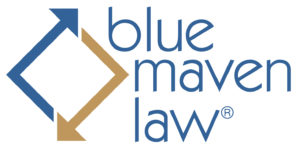Here’s a contracts quiz for you. Two parties, Southwest and Winterer, are attempting to work out an agreement about ownership of a couple of adjacent parcels of property and Southwest files a petition for partition. After mediation and other discussions, the attorney for Winterer sends the following email to the mediator:
Here is Winterer’s offer:
- Purchase Southwest’s interest in both parcels for $325,000.00;
- Southwest deliver clear marketable fee simple title to both parcels via warranty deed;
- Closing to take place at a title company of our choice within 30 days of signed Agreement;
- Both parties split the past due tax obligations and Southwest pays for ½ of the 2010 taxes, up to date of closing;
- Both parties dismiss their claims in the Partition suit with prejudice;
- Southwest and Winterer execute a document containing mutual releases, non-disclosures and nondisparagement agreements.
And, of course, both parties split your fee.
The mediator forwards the email to Southwest’s attorney and receives the following response:
My client will accept the offer below. We will prepare a settlement agreement and mutual release reflecting the below terms. Thanks for your help.
Winterer refuses to sign a settlement agreement, and Southwest files a motion to enforce the settlement reached by email. Who wins?
If you answered Southwest, you’re right, according to the Missouri Court of Appeals, Eastern District in Southwest Parts Supply, Inc. v. Winterer, which upheld the trial court’s judgment that the email exchange formed a binding settlement agreement.
There’s more to the story
Now, here are a few more facts to make the analysis a little more interesting:
- When Southwest sent Winterer the draft settlement agreement, it included provisions informing Winterer that a lawsuit related to the properties by a third party was pending against Southwest, and that Southwest would agree to indemnify Winterer for any liability arising out of that lawsuit. Winterer had not previously been informed of the litigation.
- That litigation was resolved before the trial court ruled on Southwest’s motion to enforce the email settlement.
- Winterer refused to sign the settlement agreement unless a financing contingency was added.
Does this change your answer? If not, you’re still in agreement with the Missouri Court of Appeals.
Exchange of emails formed binding settlement agreement
At trial and on appeal, Winterer argued that Southwest’s draft settlement agreement constituted a rejection and counter-offer rather than an acceptance because it contained a term that was not in Winterer’s emailed offer to settle — that is, the provisions relating to the third-party litigation involving the properties. While under the common law an acceptance that adds terms to an offer constitutes a counter-offer, the trial and appellate courts ruled that Winterer’s offer had already been accepted by Southwest’s email — thus forming a binding settlement agreement — so the settlement agreement could not have been a counter-offer.
The existence of the third-party litigation, which hadn’t been disclosed to Winterer when the settlement agreement was reached, adds an interesting twist. As the appellate court noted, the undisclosed litigation might have given Winterer grounds for rescission of the settlement agreement, but no such claim was made.
Any take-home tips?
As I discussed in this post about an email exchange that created a binding contract, contracts can be formed by email. In this case, it’s clear that the parties intended to form a contract. But it appears that the email exchange formed a contract before Southwest and Winterer had fully thought through the implications of their settlement — in the case of Southwest, the effect of the third-party litigation on its settlement with Winterer and in the case of Winterer the possibility that it wouldn’t be able to obtain financing to carry out its obligations under the settlement agreement.
It’s common for a deal to be hammered out in concept before lawyers are brought in to document the deal. And the process of negotiating definitive agreements often brings new issues to the surface. But that can be a problem when a binding agreement has already been struck via email correspondence, because adding new terms would require a modification to the contract.
For the contracts pros out there, what tips would you take from this case?


Brian, from an English lawyer’s perspective, it is surprising that Winterer’s attorney didn’t use the words “subject to contract” or some other label to indicate that the offer was not capable of acceptance in its present form.
A second thought is about the terms of the mediation agreement. To allow parties to make proposals in a mediation in a safe environment, should there not be a clause in that agreement saying something along the lines of “Any resolution reached in the Mediation will not be legally binding until it has been prepared in writing and signed by, or on behalf of, the Parties.”
Finally, I am puzzled as to whether an offer made to a third party (mediator) should be treated as an offer for the purposes of contract formation. No doubt there is case law on this point under Missouri and English law, respectively, but I haven’t looked into it.
Mark: It’s surprising from an American lawyer’s perspective, also, except that the informality of email seems to lull us to sleep when it comes to such things.
I hadn’t thought of the issue, but I’m now curious whether there’s case law about offers being transmitted through third parties. Something else to put on the research to-do list ….
Brian
Mark: On your suggestion about the mediation agreement, including such a clause would surely help. You could also try to keep an email exchange from being deemed a writing by defining writing — “Neither electronic mail nor instant messaging will be considered a ‘writing’ ….” — although I haven’t researched how courts view such language.
I’ve been thinking about this issue lately, and one possible solution I’ve been mulling is to use the normally useless “confidentiality/Circular 230” email signatures/footers that everyone ignores to head this off at the pass. For example, a business could require everyone in the organization to their footer that says “nothing in this email (excluding any attachments) is intended to serve as an electronic signature or to form a binding contract or agreement. Any agreements reached by email are subject to further negotiation and shall not be binding until such time as a formal contract, expressly designated as such, is signed by all parties to such agreement.”
I’m sure that language needs a lot of work, but it should do to convey the concept. What do you think?
Greg: I’ve been told, but haven’t verified, that the Missouri Bar recommends such an approach. The Uniform Electronic Transactions Act places electronic signatures on par with wet ink signatures in most cases when the parties opt to conduct a transaction through electronic means, and your disclaimer would purport to opt out of the UETA. Still, evidence in the body of the email of an intent to form a binding agreement would probably trump a disclaimer automatically inserted into the email footer. Manually inserting your disclaimer into the body of select emails where contract terms are discussed (rather than having the disclaimer inserted into all emails) would probably be more effective as it would more clearly evidence an intent to opt out of the UETA — or you could use the belt and suspenders approach and do both.
Brian
Great post, and interesting story. If the first (understandable) reaction is to add disclaimers to the email signature, is it really a solution to the problem? I’ve stopped reading those small print disclaimers long ago, and as Brian noted, it’s unlikely to be effective if automatic.
Maybe email is not the right place to negotiate contracts. But there are not many alternatives, if you think about it. We’re are now busy building a different solution that could potentially fix this, but in general I think it’s worth to think long-term solution, rather than just grasping to the cheapest, fastest way to avoid liability.